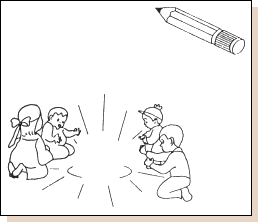![[Home]](http://www.bayleshanks.com/cartoonbayle.png)
(where are the other ones that i wrote down?)
marr and poggio's "principal of least committment" during recognition problems (i.e. at each hierarchial processing stage, rule out alternatives conservatively, and usually keep multiple alternatives alive)
human consciousness globablly have just one belief strength or "modality" (semiotics; authority/trust/reliability/truthiness/probablity/(true
| possible | necessary) or probability associated with each predicate (either i believe there is a door there, or i am not sure, but it's never that i partly think it's true, and partly not sure in different parts of my mind, at least not consciously) |

but see this: http://www.aber.ac.uk/media/Documents/S4B/sem02a.html "John Kennedy showed children a simple line drawing featuring a group of children sitting in a circle with a gap in their midst (Kennedy 1974). He asked them to add to this gap a drawing of their own, and when they concentrated on the central region of the drawing, many of them tried to pick up the pencil which was depicted in the top right-hand corner of the drawing!". clear evidence that we only have one REPORTABLE modality, alto different ones do exist going by our actions
Brain MUST handle missing data in a uniform way; hence prediction fundamental to architecture